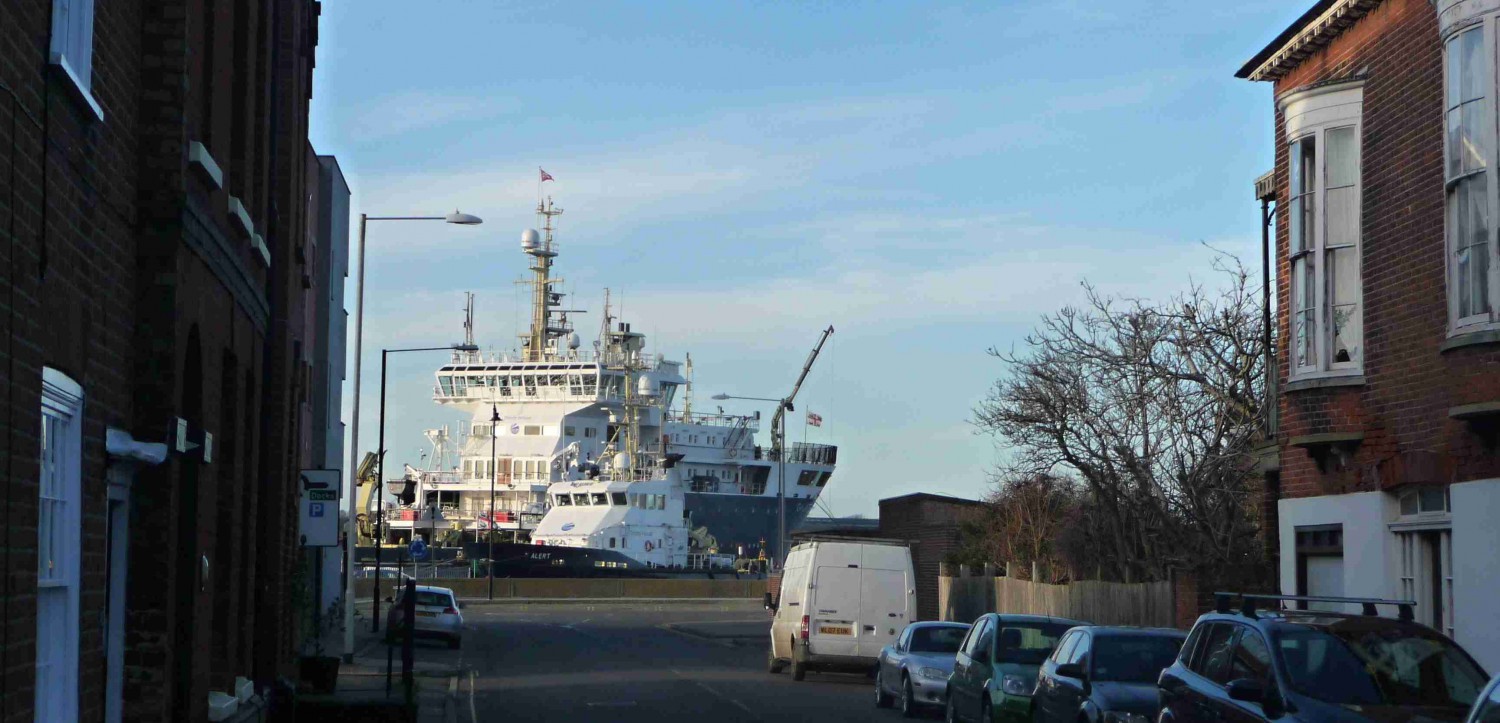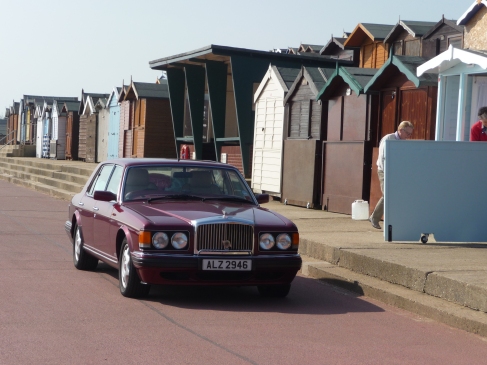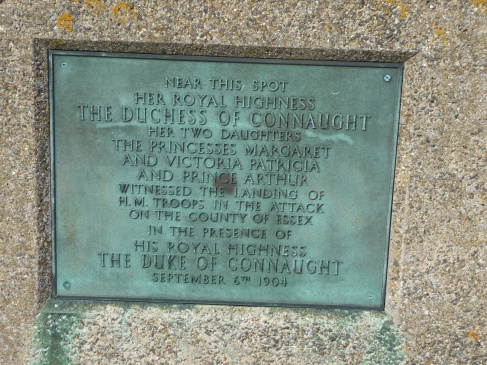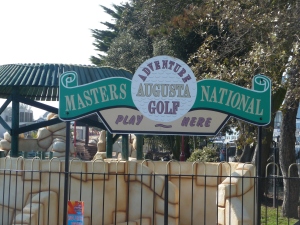SPECIAL! Blog includes free Tendring Council souvenir poster to display on your beach hut. Especially designed for Walking the Essex Coast by Master F.
Wednesday 21st March
We are meeting at Thorpe-le-Soken rail station. Here, the line that comes from London, Liverpool Street divides. One branch to Clacton, the other to Walton and Frinton. We will catch the train to Walton, walk to Clacton, and then train back to Thorpe-le-Soken. Easy.
I’m first to arrive and, as I’m putting my £3.70 for the day’s parking into the machine, I fall into conversation with a man doing the same; “It’s a joke, a Rip-off” he says. “Yes” I agree to agree, and ask him about the trains to Walton. “Well, that’s if you can get a train at all… It’s a terrible service, you’ll be lucky to get there. To tell you the truth, you’d be better off driving.”
The others turn up. Today’s the first we’ve had of clear blue skies; the best possible conditions to experience the glamour and romance of the Tendring Peninsular’s Sunshine Coastline, and it will take more than a pessimist to dampen our spirits. Ebb Tide, Master F and I are joined by Miss Teri, competition poker player and connoisseur of fine wools (more importantly, perhaps, the light of Master F.’s life, and I believe that the illuminatory arrangement is mutual). The trains work perfectly, and at Walton, we spring from carriage to platform agog with excitement and anticipation.
We’ve left estuary and marshland behind us for the time being – none of that shifting ambiguity between fields, saltmarsh, mud and water; here the distinction between land and sea is clearly enforced by promenades, piers, beach huts and golden sands – this is The Seaside, and when, soon after the start of our walk, we see a Bentley parked outside a beach hut on Walton front, our hearts surge, confident that some of the glitter of the Essex Riviera will transfer itself to us.
One of the things we’ve left behind on this stretch, along with the saltmarsh, is the diversity of birdlife. We’re restricted to loads of Gulls, and the occasional Turnstone and Oystercatcher. However, limited birdwatching is more than made up for by Miss Teri’s discernment in wool-spotting. There are plenty of people out in the sunshine, and the temperature is cool and favourable for knitwear. Acrylic mix, Machine-knit Pringle and Pure New Wool are quickly clocked up, but, most exciting of all, is the Katia Scarf. Katia wool has an interesting migratory pattern. Originating from Spain, it is almost impossible to spot in that country, so a part of Miss Teri’s job, with a wool trading company, is to perform a brisk service in re-migration from Hertfordshire to its native land, where it is a prized sighting. Not being particularly attuned to the ecology of the free market, this feels slightly counter-intuitive, but then, I’m also puzzled by the fact that Brent Geese migrate to Scandinavia for the summer.
There are several people painting huts, clearing them out ready for the coming season. One woman with a mountain of stuff outside her hut explains that they’re having a clear-out because “our grandchildren are getting older, and they’re not going to need half the stuff they had last year”.
Passing through Walton, around a curve in the coast, the beach huts become larger, higher spec and spaced further apart; we realise we must be approaching Frinton; majestic blocks of luxury flats with sea views, towering over the sweeping greensward. ”Harwich for The Continent; Frinton for the incontinent” was the age-old Essex joke; the sort of cruel and unnecessary humour which gets less funny the closer you get to the age of possible incontinence, and with which our group has no truck whatsoever.
Coming into Holland-on-Sea, there is a plaque;
One of my fantasies in writing this fact-lite and impressionistic blog is that someone might respond and ease my puzzlement over things like this; ‘Near’ this spot? Why not ‘At’ this spot? Who were all these people? Why were they there? Why was She ‘in the presence of’ He? And why was Essex, or, more specifically, Holland-on-Sea, being attacked by H.M. troops in December 1904? Presumably, a family of minor royalty was wheeled out to watch some military exercise, but that happens all the time; it’s what royalty do, so why a plaque? It would be good to know.
This does, however, serve as a reminder that the Tendring coast is not entirely devoted to glamour and hedonism. The Martello towers and pill-box machine-gun nests dotted along its length are evidence that over the last couple of centuries, this has been a potential front line against the threat of invasion from several over-ambitious men, from Napoleon on, and it’s clear that the fortress spirit still lingers. Union Jacks fluttering outside a couple of seaside villas in Holland-on-Sea indicate that the English character is still proudly resistant to possible corruption from unseemly European influence. A little further on, as we cross the border into Clacton, an even earlier period is evoked in the form of a fake Tudor mansion, willing the Spanish Armada to return and be defeated again.
The present-day equivalent to Napoleonic invasion as a threat to national backbone is, of course, the public sector workforce. Ebb Tide and myself are only slightly surprised when an approaching cyclist brakes and pulls up beside us to indicate a couple of council vehicles ahead in which, he informs us, two Tendring Council workers are apparently sleeping. “It’s a joke isn’t it?” he asks, cheerfully assuming our complicity. “all these cutbacks, and there they are.” “We’ll take a photograph” responds Ebb Tide, drily. We pass the vehicles and it is true that in one of them, there is a man having a nap. In the other vehicle, the occupant appears to be eating his lunch. Today is budget day, and with the urgent need for deficit cutting and pruning the bloated public sector foremost in our minds, we simultaneously suppress our bile and bristle with indignation (not easily done) at the irresponsibility of people who presume the entitlement to a lunch break at one o’clock in the afternoon, when they’ve probably only been working for five hours. We pass in potent silence.
It provides something of a theme for the walk, because for the rest of the time, I keep noticing industrious public works (DEFRA funded seawall reinforcement at Holland, Council gardeners in the Clacton pierhead area) and can’t help contrasting them with, for example, the abandoned dereliction of what was presumably intended to be a warehouse residential conversion at Thorpe Station, or the ‘luxury apartments’ scheduled for development (non-existent) at the entrance to Walton pier. But this type of oppositional thinking is the subject for another blog.
It has to be said that Clacton has brightened up considerably since the last time I was there, probably ten years ago, when I remember a wind-blasted ruin. Buildings are freshly painted and restored, Wetherspoons seems to be doing a good trade and, crucially, ‘Steel Stella’, the pier’s big dipper (which looks a lot smaller than when I rode it aged eight), is up and running (well, it’s actually closed, pre-season, but will be soon). Master F. and I are particularly taken by the Augusta Masters National Adventure Golf Course, and had it been open, we’d have quit the walk straight away for the sake of a round. There is a place for private enterprise after all- just keep it away from anything important like health, welfare, education and housing (Stop it. Ed… Miliband).
Master F. tears at our heart strings with stories of being made to walk this coast at the age of 10, from Walton to Jaywick, by his mother, simply, he says, to tire he and his kid brother out. He claims to still bear the emotional scars from this, although, his mum, Mrs Master F., should have a right to reply here, because I reckon he could have been a right handful as a ten-year-old. It wasn’t all hard times though, because, as we approach the southern end of Clacton, Master F. is able to point out the site of the legendary Clacton Butlin’s, where he has fond memories of being bought day tickets for the rides. He points out the concrete marks in the sea wall where the notorious fencing around the camp had been removed and the holes made good. The site is now a housing estate, and it’s disappointing to see that there isn’t at least a plaque to commemorate Billy Butlin, who, with his private-sector guile, must have been more important to more people than the DUCHESS OF CONNAUGHT, watching the publicly-funded landing of H.M. troops, ‘In the Presence of’ THE DUKE OF CONNAUGHT and their suppositories, in 1904.
An epic day, helped by the blue skies; but there is something about this part, and many parts of Tendring, that can induce the need to practice simultaneous bile-stifling and indignation-bristling. It can piss you off, big time, like the pessimist at Thorpe station on a district-wide scale, and it will be good to move to more congenial parts. Brushing the glitter from our shoes, we head for Clacton station. The trains work perfectly.







